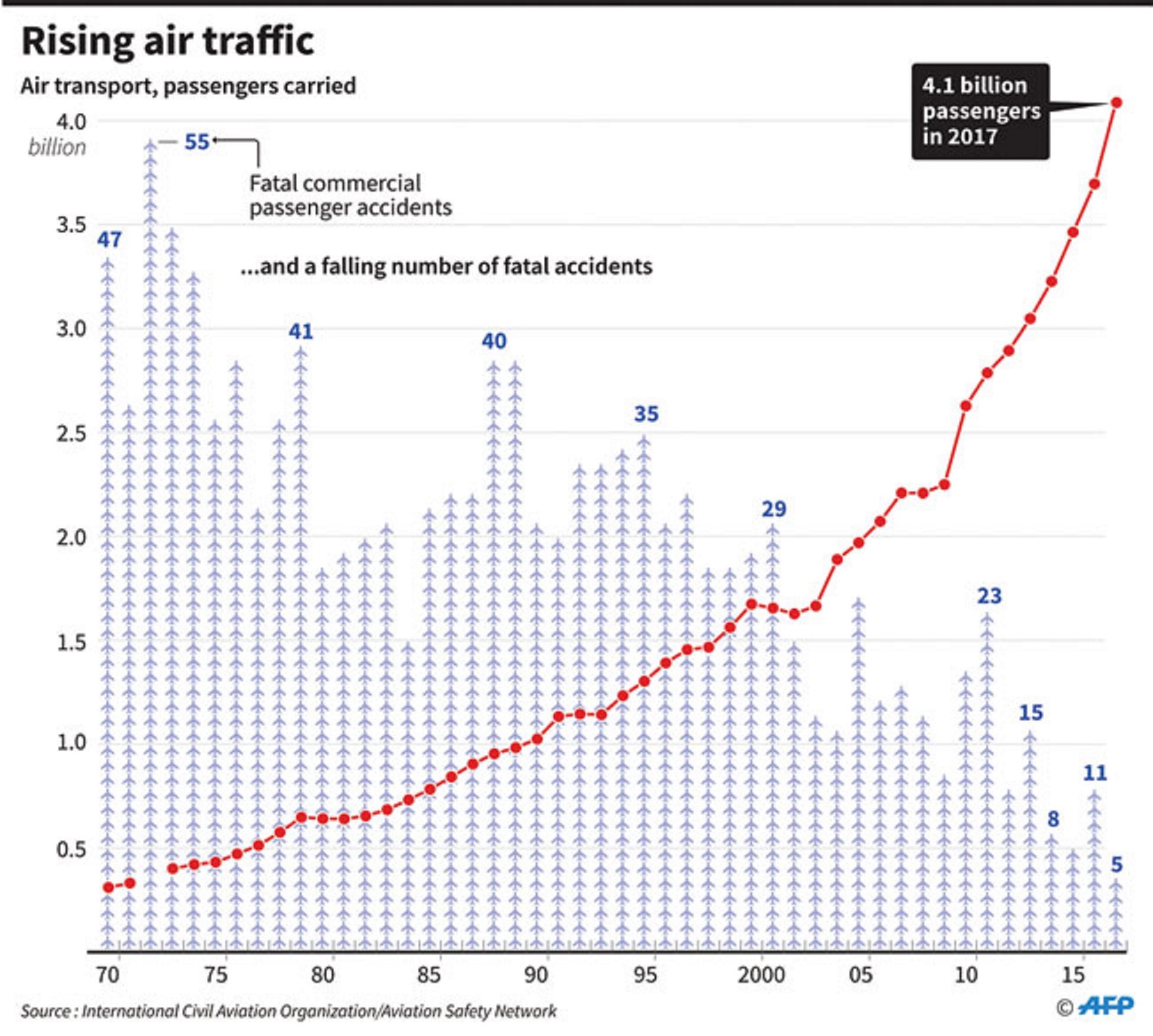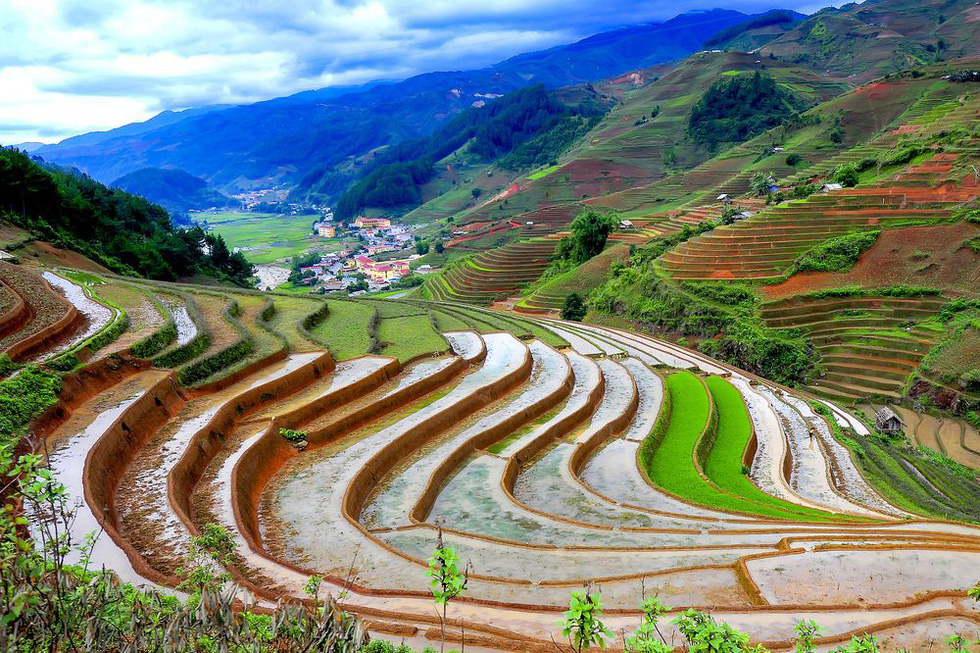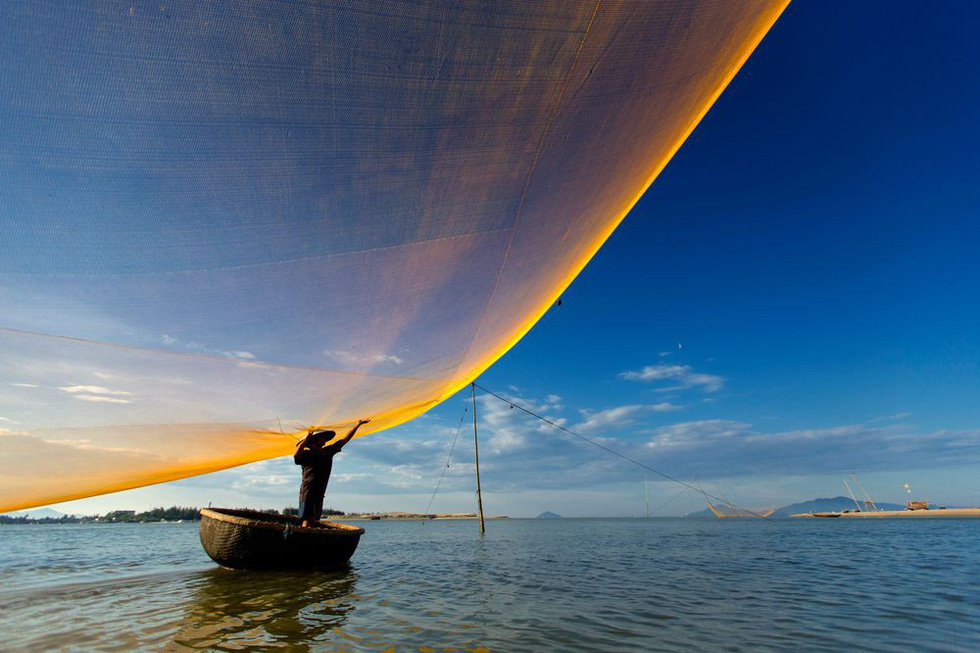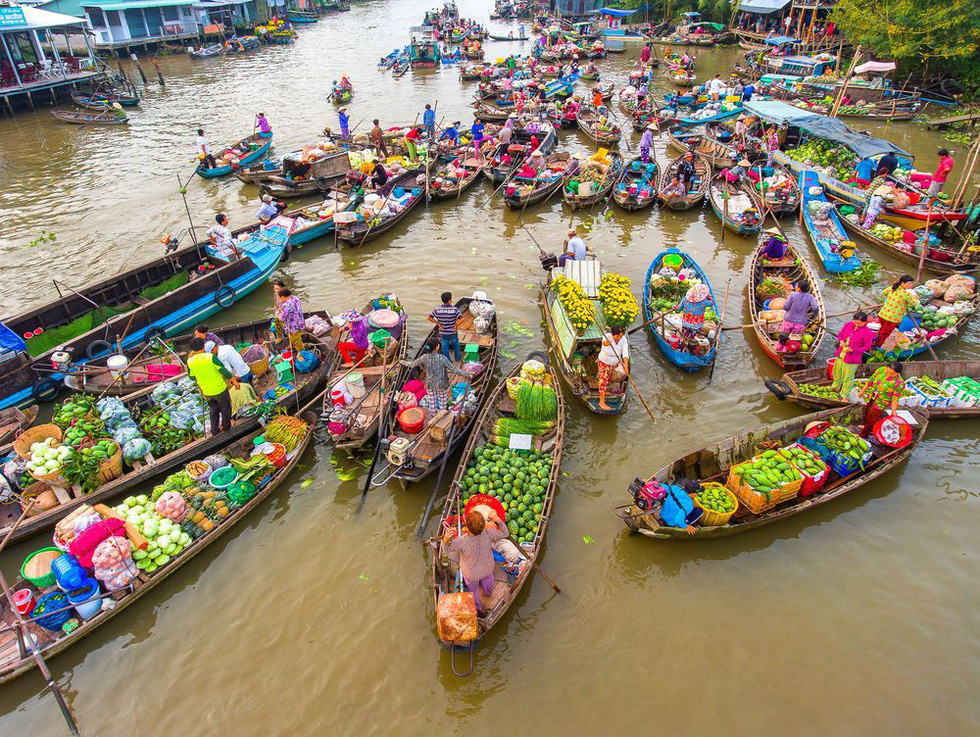Last year over four billion passengers flew on commercial flights around the world – that’s a lot by any measure, but did you realize that air traffic has….
… more than doubled in the last 7 years?
 |
| Credit: International Civil Aviation Organization (ICAO) |
The number of visitors to Vietnam from abroad also continues to increase dramatically, doubling in the last five years alone. Ho Chi Minh City and Hanoi have been among the top 20 fastest-growing Asian destinations in recent years, just one example of growing international interest in Vietnam.
And with all those trips comes overtourism – defined as having too many visitors at a destination, thus causing an impact on the environment and residents.
What are the issues at some popular tourist destinations around the world and how are they being addressed?
Venice, Italy, a relatively small city, receives over 20 million tourists annually and can’t keep up. Recent new laws limit the number of kebab (Middle-Eastern street food) shops and forbid visitors from sitting in designated areas. You read that right – sitting!
Santorini, Greece, is only 96 square kilometers in size (slightly larger than Hue in Vietnam) but will be visited by over two million tourists this year. The mayor has capped the number of cruise ship visitors per day and is working on overall daily limits for tourists. Even the donkeys are worn out from hauling tourists and luggage up the steep inclines so limits on payload and working hours are being put in place.
Machu Picchu, the ancient Incan citadel in the mountains of Peru, put many new rules in place last year, starting with an annual cap of one million visitors at the maximum. Visitors now must be accompanied by registered guides and can only stay on the site for half a day instead of the full day previously allowed.
 |
| Terraced fields in Vietnam. Photo: Hoang Thai/Yourshot/National Geographic |
What about Southeast Asia?
Ever-popular Boracay Island in the Philippines was labelled a “cesspool” early this year by the country’s president, who ordered the island to be closed for six months to facilitate a clean-up.
Bali, Indonesia, declared a “garbage emergency” last year when beaches became inundated with plastic waste, a seasonal phenomenon which has spiralled way out of control. Fresh water is at such a premium that large hotels have trucked it in from nearby Java for several years.
Angkor Wat near Siem Reap, Cambodia, was visited by over 2.5 million tourists last year, up 12% from 2016, so authorities have put limits on the number of visitors to some areas of the complex due to overcrowding.
What’s the current situation in Vietnam?
Ho Chi Minh City is the largest urban area in the country and commercial capital of Vietnam. Phase 1 of the MRT was scheduled to begin operation in 2020 with many lines to follow, but that schedule seems to be out of the question now. New water bus routes were started last year with great success.
The Ministry of Transport approved construction of Terminal 3 at Tan Son Nhat International Airport this year, to be built on land borrowed from the defense ministry.
Hanoi is the second-largest urban area in the country with a population of over seven million, with transportation and air quality among the challenges to be overcome to sustain the permanent population, let alone the almost 24 million annual visitors.
The initial phase of the MRT (Mass Rapid Transit) system is in test mode and will go into service in 2019 and a new terminal is planned for Noi Bai International Airport.
Next on the list of the most visited destinations are Trang An Scenic Landscape and Caves/Bai Dinh Pagoda/Hoa Lu Ancient Capital in Ninh Binh Province. This recently inscribed UNESCO World Heritage Site had already been a popular spot for domestic tourists, then the filming of Hollywood blockbuster “Kong: Skull Island” last year exposed it even more to international audiences.
Authorities are planning sustainable tourism projects now with tour companies and experts from Vietnam and abroad.
Activities to manage tourism at Ha Long Bay have been going on for many years, including a tourism plan for Quang Ninh Province formalized in 2014 that will be fully implemented by 2020, with direction for 2030 included.
Fishing is now banned in the bay, entrance and tourist fees will be increased in 2019, and nearby tourist sites are being developed to relieve pressure on Ha Long Bay. Authorities are considering putting monthly limits on the number of visitors to spread tourism over all months of the year.
Da Nang is reaping great success in tourism with arrivals increasing sixfold during the last 10 years. A new international terminal at its airport was completed several years ahead of the original plan plus many road improvements gave the city a general polishing for the APEC summit last year.
Da Lat is in good shape despite being among the top destinations for domestic tourism because the city is spread out and sparsely populated, so there is abundant room for expansion in the area surrounding the city center.
Nha Trang will easily top six million visitors in 2018, including about 1.5 million Chinese tourists. Many Chinese tourists buy complete packages in China before coming to Vietnam, including transportation, accommodation, meals, and even shopping, thus putting their tourist dollars into the hands of businesses in China instead of local entrepreneurs and companies.
This “Zero Dong Tour” issue has escalated to the point where Khanh Hoa Province officials have requested help from national authorities to curb the use of electronic payment systems such as AliPay, WeChat, and others.
Tour companies also use Chinese guides illegally, which cuts further into local profits.
Hoi An had well over three million visitors in 2017, with foreign tourists in the majority, and already welcomed over four million during the first nine months of this year, bringing a number of issues with its growing popularity.
The same “Zero Dong Tour” problem as Nha Trang, Ha Long Bay, and other destinations is causing a headache for local businesses, as well as increased scamming by vendors in the ancient town.
Authorities have acknowledged the issues as the return rate of tourists is decreasing despite growing popularity overall. City officials are facilitating forums involving various tourism stakeholders to work on the above issues, and possible solutions include better licensing of vendors and guides.
Lao Cai, the home province of Fansipan (the largest mountain on the Indochina Peninsula at over 3,100 meters) and Sa Pa, has exploded in popularity, especially since the completion of the highway from Hanoi in 2014.
Purists complain that the area is overtouristed and lost its appeal, but the flip side is the economic boom that comes with the expansion.
Phu Quoc has until recently focused on domestic tourism, but a new international airport terminal and a large increase in flights from abroad are changing the landscape quickly. The native population of 100,000 can’t supply enough skilled labour to manage the inflow of tourists and waste management is already a concern.
 |
| Catching fish in Vietnam. Photo: Quang Vu/Yourshot/National Geographic |
Can’t win situation
The developed destinations want to maintain or increase tourism, the newer ones want to grow as quickly as possible. In cases such as Vietnam’s, it’s not about improving an already decent standard of living for those involved – tourism lifts many out of poverty – so the stakes are very high and decisions tough to make.
It’s encouraging to see how the Phong Nha-Ke Bang National Park is being developed in a responsible way, with strict limits on visitors imposed in areas where environmental impact is a challenge. That is a good long-term bet, especially because the park is a UNESCO World Heritage Site and Son Doong is the largest known cave in the world.
Skeptics will roll their eyes at some of the activities underway in Vietnam, but to me authorities here are ahead of the game. When I lived in Europe 25 years ago, it was well known that Venice was sinking into the ocean and overrun by tourists, yet only in the last few years are solutions being implemented.
Either authorities limit access to retain authenticity or develop new places, while maintaining just the right balance between development and sustainability.
As the old saying goes: “What goes around, comes around” and interest in Vietnam is sure to keep growing at a breakneck speed, so it’s a question of paying to protect the environment now, or paying much more later to fix it.



















































